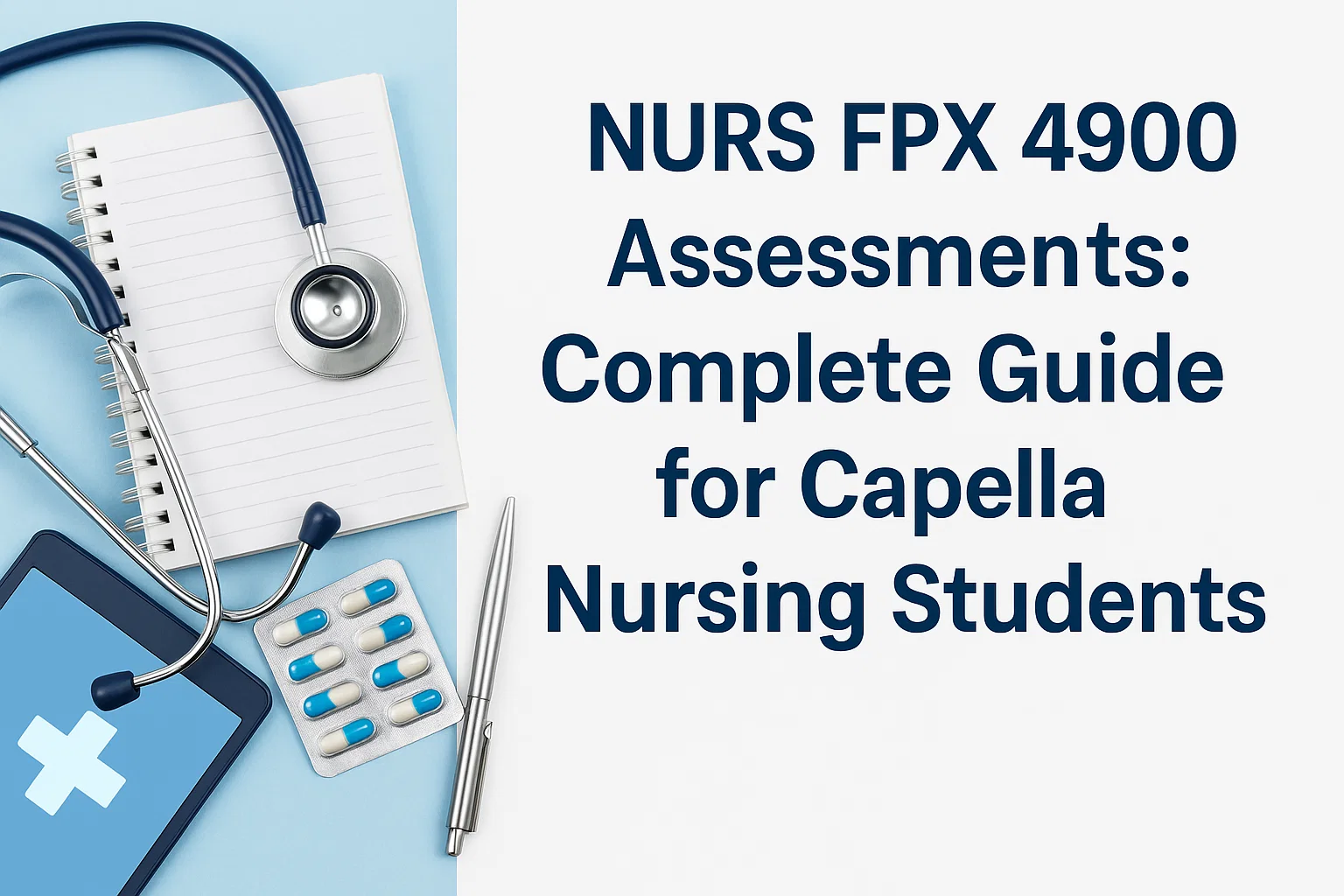Due to the increasing percentage of older adult clients in the U.S., it is imperative that healthcare providers assess and confront their own attitudes and perceptions toward older adults.
The United States population is experiencing a demographic shift, with the older adult population growing continuously. According to the U.S. Census Bureau, by 2030, nearly 20% of Americans will be aged 65 or older, highlighting the urgent need to address ageism in healthcare. As the percentage of the older population continues to expand, healthcare providers will need to get ready to handle the special requirements of this group because older adults will make up a growing percentage of the general population. Shadowing older adults faced with quality care has been rendered difficult because of persistent ageist beliefs throughout health systems.
Older adults face discriminatory attitudes through ageism, which frequently occurs in both hidden and openly displayed forms, thus negatively affecting their medical care quality. Healthcare providers must understand their biases against older adults because this recognition, along with confronting personal prejudices, leads to better care for their patients. This article evaluates ageism in healthcare provisions and provides assessment methods healthcare professionals can use to identify and manage their biases.
1. Describe ageism and its impact on societal views of older adult clients.
Understanding Ageism: Definition and Characteristics
Ageism definition refers to stereotypes, prejudices, and discriminatory behaviors based on a person’s age, particularly toward older adults. When asking what is ageism, it involves various forms of discrimination, including undesirable sentiments, economic and decisional barriers that prevent equal treatment from health services, workplaces, and social settings. Ageism in healthcare also manifests when older adults face prejudiced attitudes that affect their access to quality medical care.
Society holds deeply rooted negative perceptions about aging. Many social beliefs assume that aging leads to dependency and a diminished sense of value. Common misconceptions suggest older adults are feeble, forgetful, and resistant to change, which fuels social discrimination. These ageism stereotypes impact not only how society views older individuals but also influence healthcare providers’ medical decisions regarding elderly patients.
The Roots of Ageism in Society
Ageism meaning refers to stereotypes, prejudices, and discriminatory behaviors based on a person’s age, particularly toward older adults. Examples of ageism include undesirable sentiments toward older individuals, economic and decisional barriers that prevent equal treatment from health services and workspaces, and social exclusion. The foundation behind ageism stems mainly from social perspectives on aging itself. Society in the United States and similar cultures values youth status while treating aging as an unwanted natural progression, often associating it with physical and cognitive decline. Social perception frequently defines older adults through weak behavioral patterns, passive tendencies, and limited capabilities. Technological advancements and innovations focused on youth further reinforce the belief that older people have diminished value.
Such negative social beliefs lead to worsening social isolation and poor mental health, reducing the quality of life for older adults. These societal views prevent older adults from accessing necessary healthcare support and social services, often causing healthcare providers to develop impaired judgment when caring for elderly patients.
2. Explain how ageism can influence the healthcare provisions of older adult clients.
Ageism in Healthcare Settings
Healthcare ageism appears in explicit as well as discreetly hidden ways. Medical professionals tend to develop unconscious assumptions through their bias about what an older patient needs rather than their medical health status. They sometimes believe elderly patients lack the strength to receive particular treatments and ignore their medical symptoms, believing these signs only appear with aging.
Studies show that medical staff tend to avoid recommending aggressive treatments or advanced medicine to older patients who have multiple persistent health issues since they perceive such patients as being “too old” or “too frail” for particular methods of therapy. Older adults receive fewer possible treatment options because healthcare providers exhibit ageist beliefs about providing complete care to elderly patients in comparison to younger patients.
Impact on Diagnosis and Treatment
Healthcare ageism may cause misdiagnosis or delays in diagnosing their condition, especially among older adults. Collectively, symptoms such as fatigue, memory loss, or mobility issues are improperly diagnosed because they are mistaken for typical aging manifestations, while they might signal treatable conditions like dementia, depression, or neurological disorders. Inadequate healthcare evaluation of older adults leads to their medical conditions worsening, resulting in poor medical outcomes.
Treatment plans can be influenced by prejudice towards the elderly generation. Healthcare providers suggest advanced palliative care while neglecting to investigate medical treatment options or engage with their patients regarding their personal preferences and healthcare targets. By adopting such parent-child relations, healthcare providers invoke a loss of control and dignity during crucial medical decision-making for elderly patients.
Access to Preventive Care
Ageism can also affect older adults’ access to the necessary preventive treatments. The stigmatizing of older adults results in inadequate attention during screening procedures for cancer, cardiovascular disorders, and diabetes. Research suggests older adults need preventive care for excellent quality of life and health, yet remain outside the scope of health promotion initiatives intended for younger demographics.
Healthcare providers commonly underestimate the ability of older adults to participate in preventive measures, believing exercise and dietary changes cease to matter after reaching a certain age. Missing chances to foster improved health results become a problem in the health of older populations.
3. As a healthcare provider, how can one best assess and confront attitudes, perceptions, behaviors, and biases toward older adults?
The Importance of Self-Reflection and Awareness
Healthcare providers need to start changing their view toward ageism with an understanding of self-awareness. For deeper insights, explore this ageism sample paper to enhance awareness and patient care.Healthcare professionals need to assess their individual opinions about older adults, as well as their understanding and controlled preferences in this group of patients. They need to conduct an honest reflection of all their thoughts and actions, as well as their preconceptions. For example, do you automatically assume that an older patient is too frail for surgery or treatment? Do you find yourself talking over older adults or dismissing their complaints without adequate assessment?
Self-reflection helps healthcare professionals detect how unconscious biases affect their decision-making processes. Most healthcare professionals fail to recognize their hidden ageist perspectives mainly because society instills these beliefs deeply within people. To deliver patient-centric care, a healthcare provider needs to both identify and challenge these biases.
Education and Training
Continuous education and training stand as the most influential methods healthcare providers should use to eliminate their biases against senior patients. Healthcare professionals who take part in educational events or professional development activities about ageism, geriatric care, and cultural competence understand older adult clinical requirements better. Through educational programs, these opportunities teach providers about typical myths surrounding aging, along with physical and mental changes that older adults experience, so that they can maintain respectful perspectives on older adults.
Practicing Age-Positive Language and Communication
The words that healthcare providers choose will either help to validate negative stereotypes of aging or show their willingness to destroy these stereotypes. Patients strongly respond to how providers handle their communication through appropriate language that avoids offensive terminology because it directly affects their relationship. Medical staff should replace the terms “sweetie” and “dear” for older adults by utilizing their names and giving them equivalent professional treatment that patients receive at any age group.
Providing adequate healthcare involves giving focused attention to everything that older patients express. Healthcare establishments create feelings of invisibility among older patients, so providers must devote time to patient engagement and decision-making inclusion to establish patient trust and empowerment.
Encouraging Patient Autonomy
Doctors should encourage the autonomous choices of senior citizens by directly including them in decisions affecting their healthcare. To achieve this goal, healthcare providers should provide medical options information in clear terms, respect patient preferences, and enable patients to choose their healthcare treatments after obtaining informed knowledge. Medical care decisions should be accessible to patients regardless of their age so that patients can determine their course of treatment.
For example, older patients diagnosed with chronic illness should receive shared decision-making from their healthcare provider, who will present treatment options while discussing risks alongside benefits and listening to their personal choices. When healthcare providers maintain respect for what patients aim to achieve, like personal independence and quality of living, they deliver more beneficial and empathetic medical care.
Developing an Inclusive and Supportive Environment
Healthcare facilities need to work toward developing inclusive environments that older adults perceive as valuable spaces that show respect toward them. They must alter their physical spaces by creating accessible seating for patients who need mobility support while adding visible signs and other access tools for patients with physical limitations. The provision of healthcare requires both professional expertise and compassionate care, which healthcare providers should create through their practice of empathy toward older adults.
Conclusion
The healthcare system faces a substantial ageism problem because the number of older adults in the population keeps increasing. Healthcare professionals need to acknowledge how negative prejudices toward older patients generate poor medical care results. Healthcare providers should address personal stereotypes with educational programs to establish a welcoming atmosphere for elderly patients, thus delivering proper treatment to this demographic.
The increasingly older population requires healthcare providers to systematically oppose and dismantle ageist beliefs in their work. Healthcare professionals must first understand themselves, then proceed with learning about age-appropriate care, communicate with respect, and dedicate themselves to empowering elderly patients. Improved quality standards in healthcare delivery combined with enhanced equity lead to a compassionate care system suitable for all patients beyond age considerations.
FAQs
- What is ageism, and how does it affect older adults in healthcare?
Ageism is the discrimination or prejudice against older adults based on their age. In healthcare, it often leads to wrong assumptions about the treatment capabilities of elderly patients, which causes improper therapeutic choices that create mistakes in diagnosis and result in inadequate healthcare. Similar to how avoiding common nursing paper writing mistakes improves academic accuracy, addressing these biases enhances clinical decision-making.
- How can healthcare providers recognize their own biases toward older adults?
The identification of biases in healthcare providers starts with self-reflection, completion of ageism training, and the practice of evaluating their preconceived notions about elderly patients.
- What are some common examples of ageism in healthcare?
Common examples of ageism in healthcare include assuming that older adults are too frail for surgery, dismissing their health concerns as a regular part of aging, and under-recommending preventive care.
- Why is it important for healthcare providers to include older adults in healthcare decision-making?
Older adults must participate in healthcare decisions to protect their autonomy and enhance care plans that match their values and preferences. This results in better patient satisfaction and clinical outcomes.
- How can healthcare settings become more age-friendly?
Healthcare facilities can improve their aged-friendliness through accessible physical features, appropriate communication methods, and professional conduct that demonstrates respect for geriatric patients.
Check out or latest posts here.




